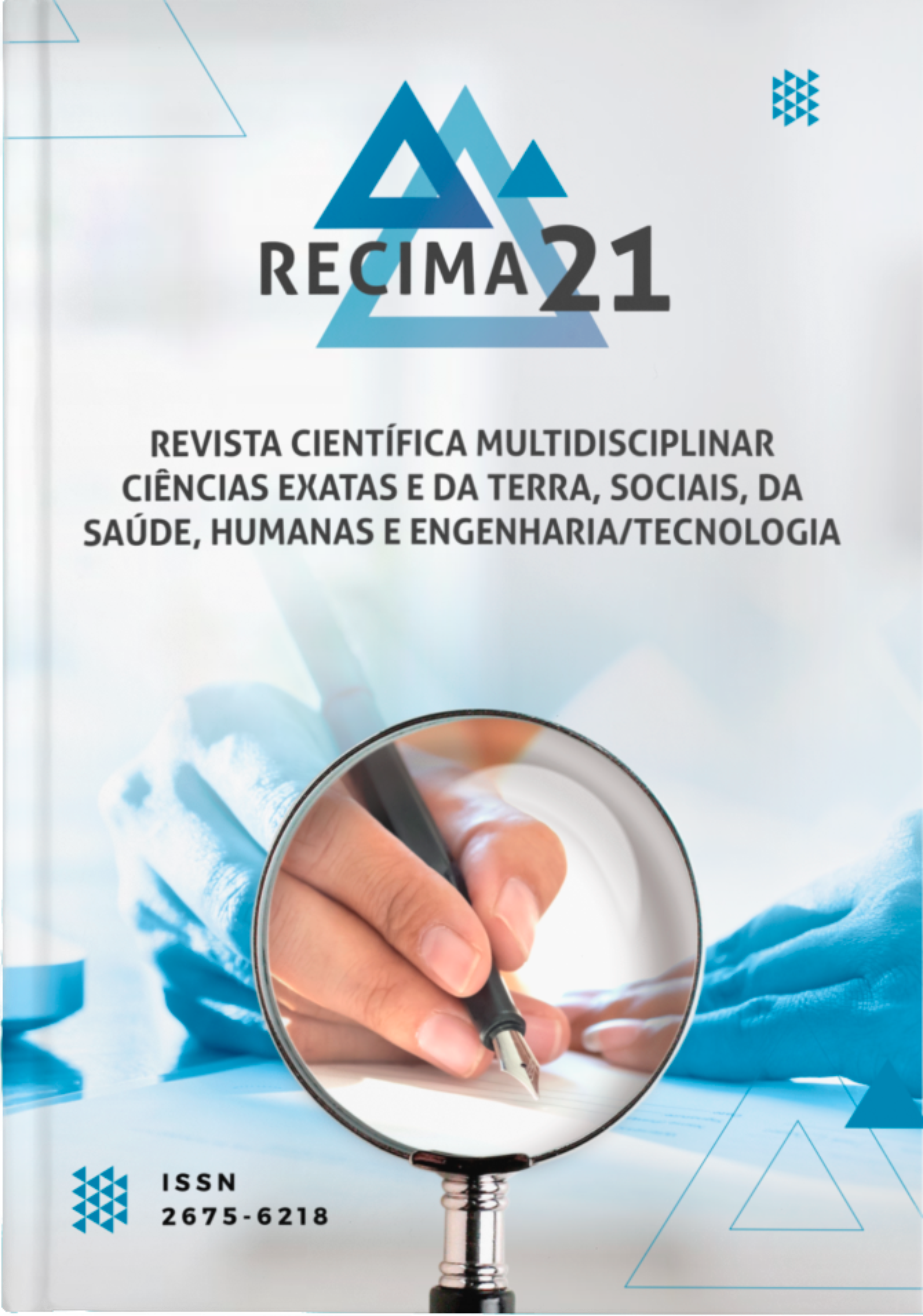POTENCIAL DAS GEOTECNOLOGIAS PARA MONITORAMENTO DO IMPACTO DA COLONIZAÇÃO NA FLORESTA NATIVA NA MICROBACIA DO RIO ENGANADO, AMAZÔNIA OCIDENTAL, BRASIL
DOI:
https://doi.org/10.47820/recima21.v2i7.588Palavras-chave:
Sensoriamento remoto, dinâmica da cobertura, monitoramento ambientalResumo
A floresta amazônica é considerada a maior floresta tropical do mundo, com abundância de recursos hídricos. Apesar da grande riqueza desta região, constata-se o avanço desenfreado do desmatamento e, consequentemente, o potencial de degradação ambiental destes recursos. Em face ao exposto, o trabalho objetivou demonstrar o potencial das geotecnologias para o monitoramento da cobertura florestal na Amazônia Ocidental, usando como exemplo a microbacia do rio Enganado. A análise da microbracia foi realizada com o Índice Vegetação por Diferença Normalizada (NDVI), com imagens dos Landsat 5 e Landsat 8, referentes aos anos de 1987, 1997, 2007 e 2017. A microbacia tem área total de 152,64 km2, e área de mata ciliar de 28,18 km2. Em 30 anos o processo de colonização ocasionou desflorestamentos constantes na microbacia e na área de mata ciliar do rio Enganado, chegando a 73,23% e 70,90% no ano de 2017, respectivamente. Esse cenário denota a suscetibilidade a escassez hídrica na microbacia, pela perda de quantidade e qualidade da água, sendo recomendado medidas mitigadoras visando a recuperação das áreas de matas ciliares e a implantação se sistemas florestais e/ou agroflorestais na região.
Downloads
Downloads
Publicado
Edição
Seção
Categorias
Licença
Copyright (c) 2021 RECIMA21 - Revista Científica Multidisciplinar - ISSN 2675-6218

Este trabalho está licenciado sob uma licença Creative Commons Attribution 4.0 International License.
Os direitos autorais dos artigos/resenhas/TCCs publicados pertecem à revista RECIMA21, e seguem o padrão Creative Commons (CC BY 4.0), permitindo a cópia ou reprodução, desde que cite a fonte e respeite os direitos dos autores e contenham menção aos mesmos nos créditos. Toda e qualquer obra publicada na revista, seu conteúdo é de responsabilidade dos autores, cabendo a RECIMA21 apenas ser o veículo de divulgação, seguindo os padrões nacionais e internacionais de publicação.













